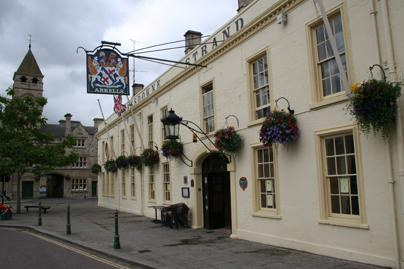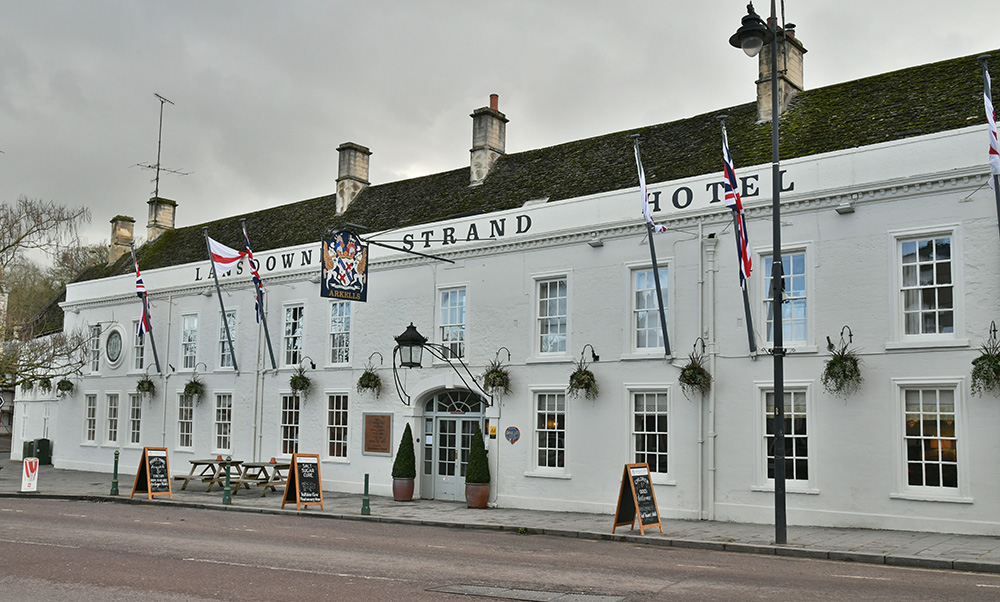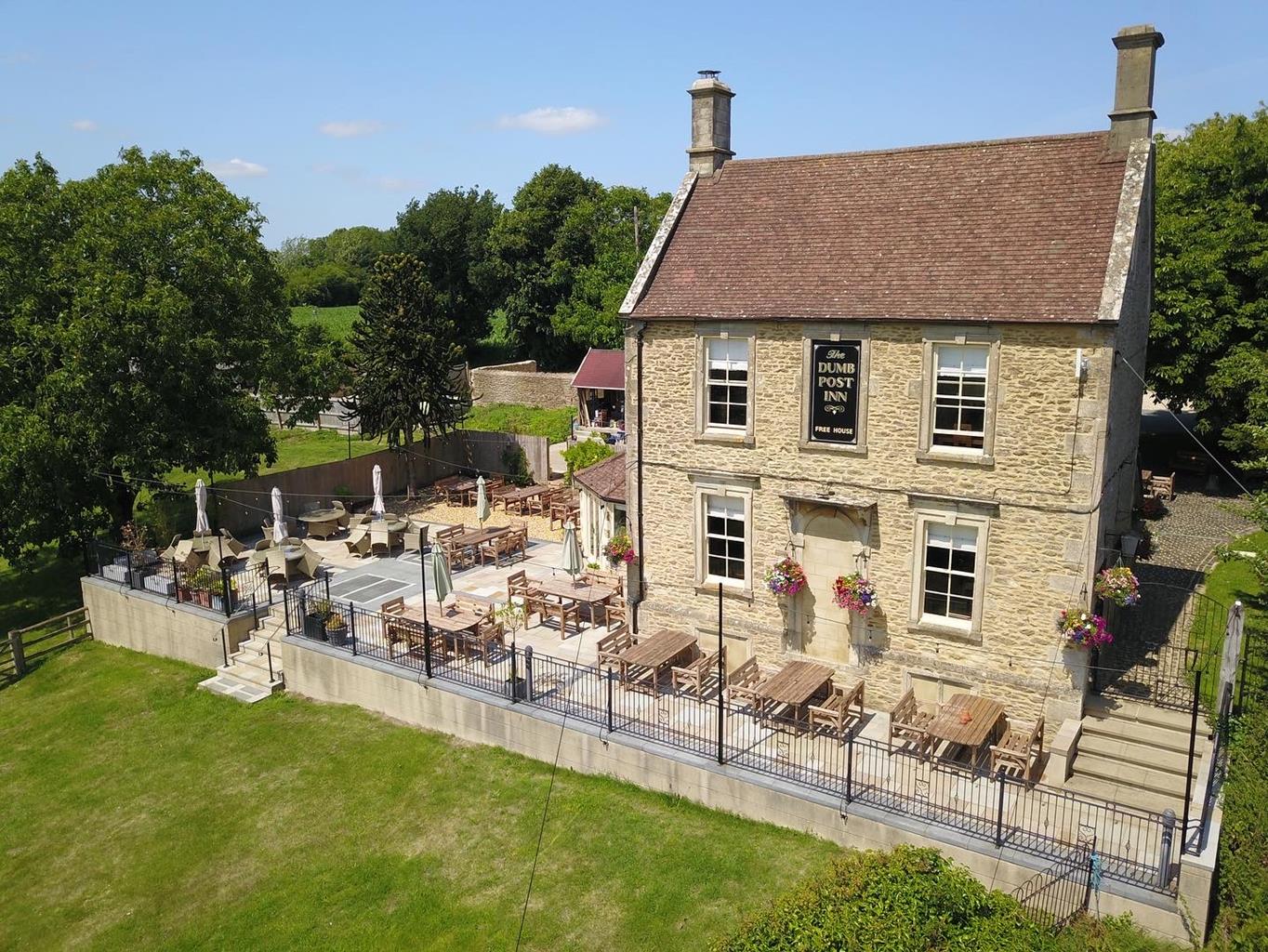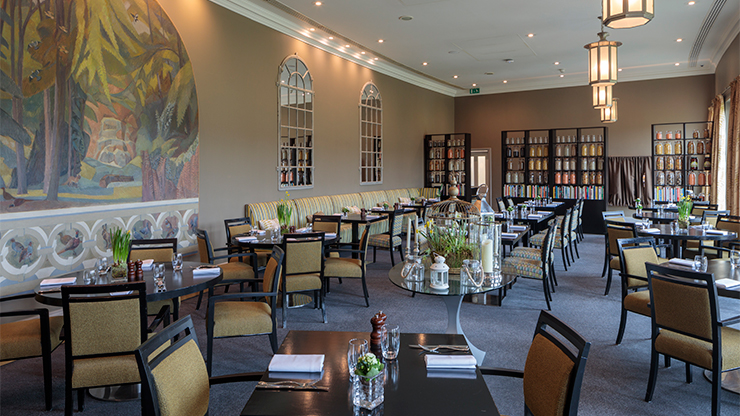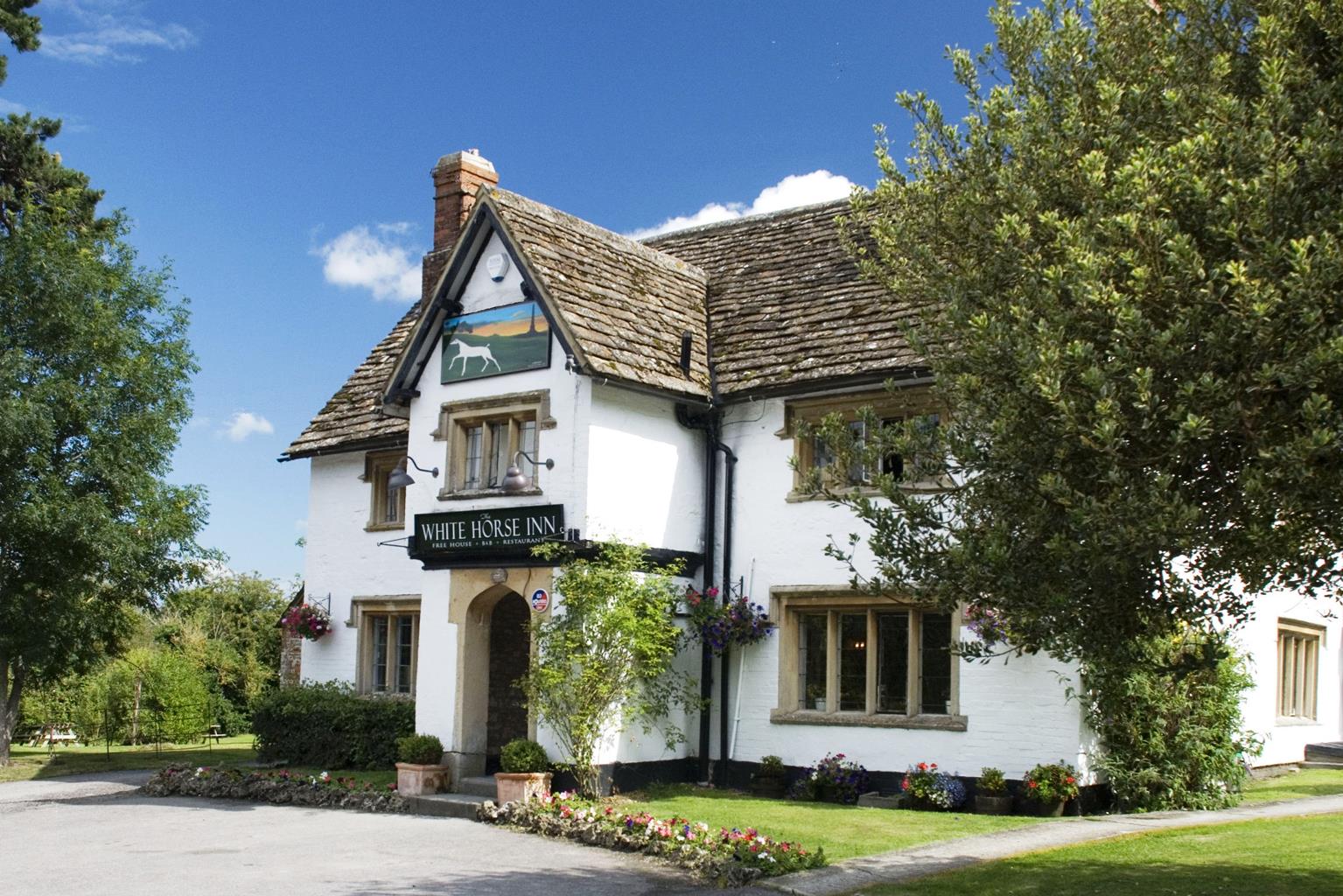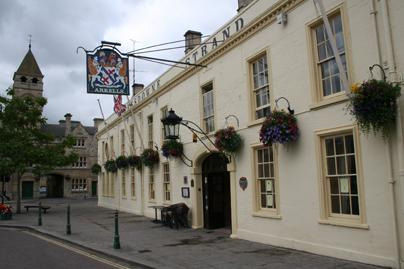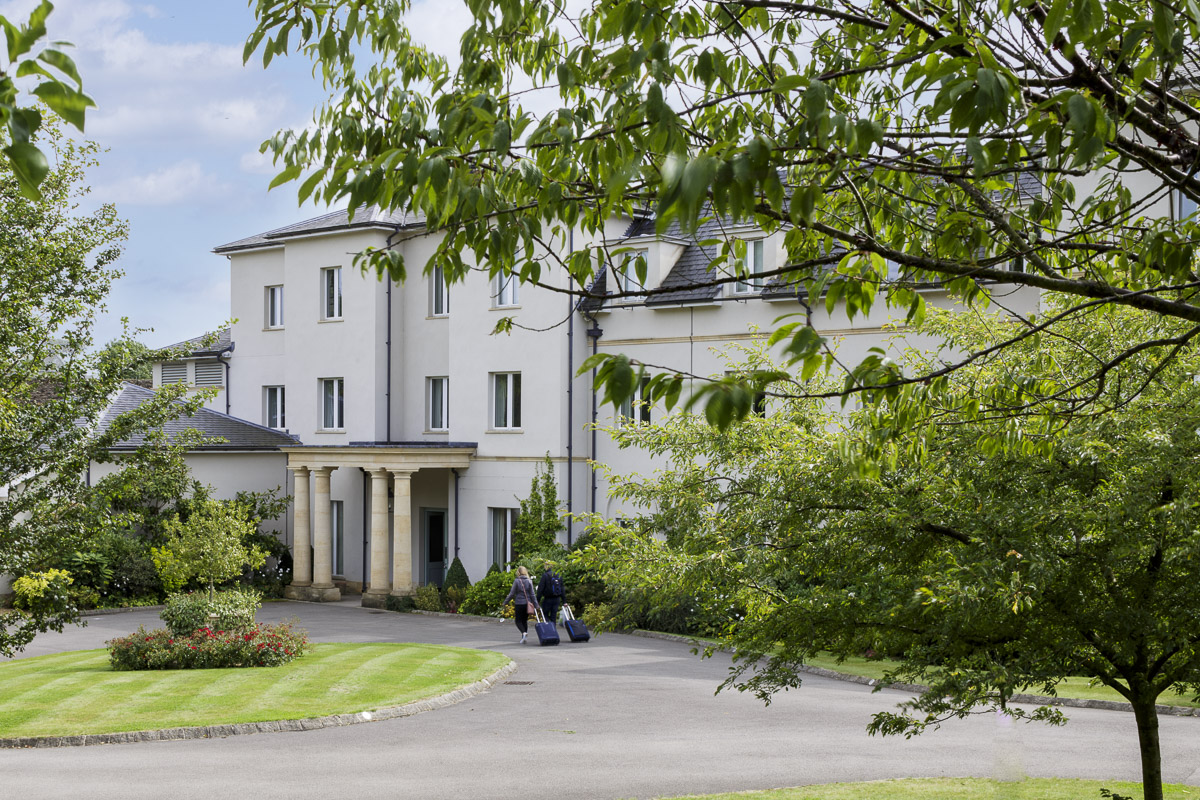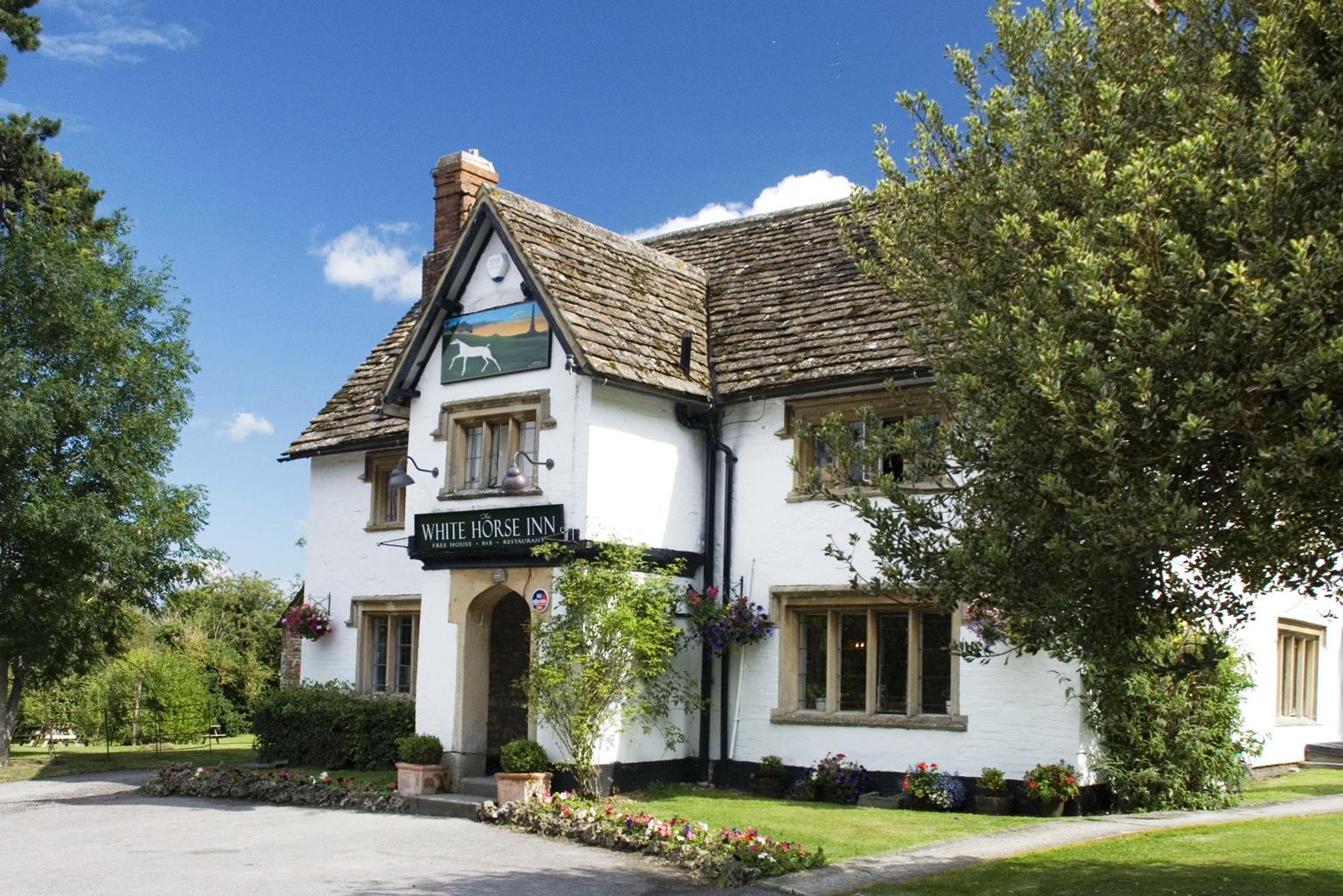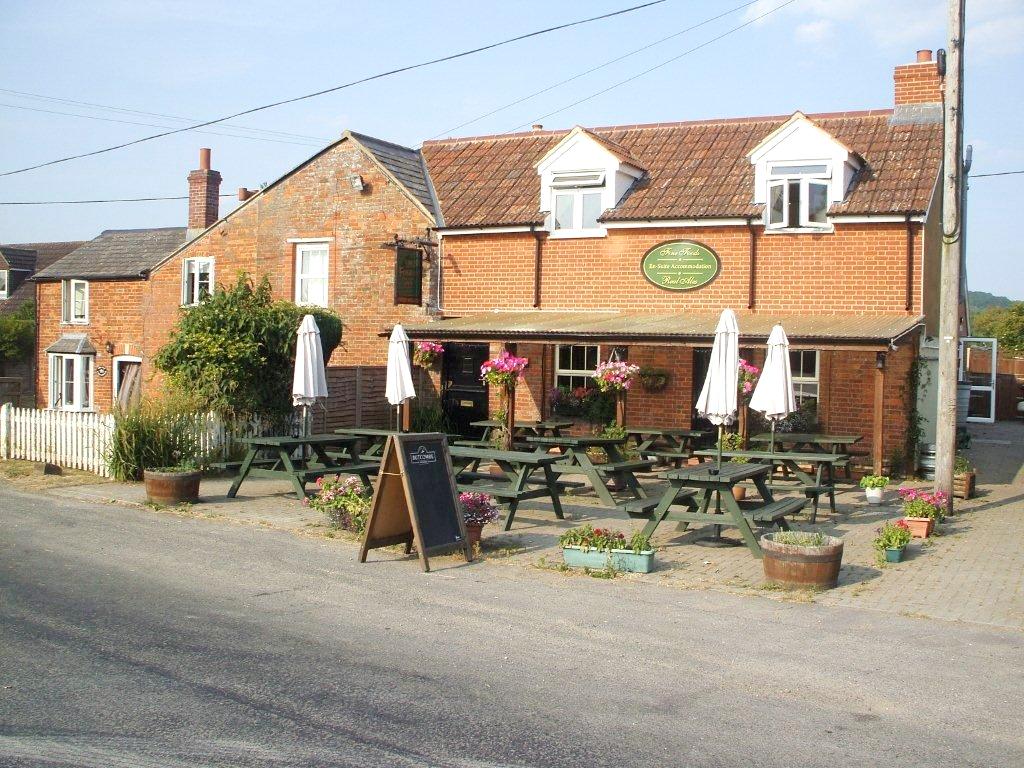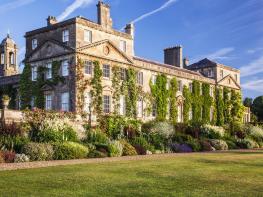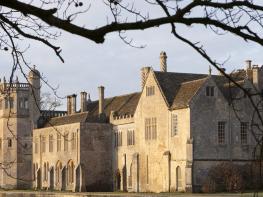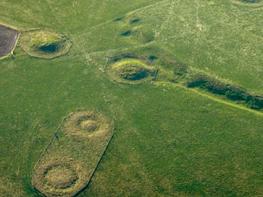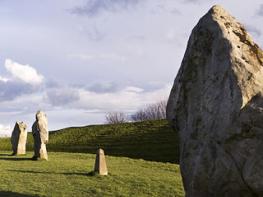The Lansdowne has a bright and fresh appearance, with an open-plan bar and dining areas which…
Bowood Park

7 miles (11.3kms)
About the walk
Like many north Wiltshire towns, Calne rose to fame producing woollen broadcloth and, up until the 18th century, the town had 20 or more mills along the River Marden. Even St Mary's Church owes its splendour to the generous donations of the rich clothiers and wool merchants in the 15th century. When the Industrial Revolution killed its livelihood, Calne turned to bacon-curing and the making of sausages and pies – meat processing had been a major employer in the town from the early 19th century, thanks to its location. Calne was a resting place on the main droving route from the West Country to Smithfield Market. Cattle, sheep and, more importantly pigs, which had been transported from Ireland via Bristol, passed through the town. Harris, the family butchers, took their pick from the grunting mass, eventually establishing their factory here, and in 1864 patented their bacon-curing process. Calne became the home of Wiltshire bacon and further prospered with the arrival of the railway. Now both the railway and Harris have gone, leaving this busy crossroads town with a faded air, although an ambitious plan for reconstructing the town centre is taking shape. Around the Green are the finest of Calne's Georgian houses, especially Adam House and Bentley House, classic reminders that Calne was once a prosperous market town.
Bowood House
Leave the town and the busy A4 and head west to the tranquil parkland that surrounds Bowood House, the true focus of your walk. Scenic footpaths take you through the 1,000 acres (405ha) of beautiful parkland, skirting the lake, pleasure gardens and the handsome Georgian house. Originally built in 1624, the house was unfinished when it was bought by the first Earl of Shelburne in 1764. He employed some of the greatest British architects of the day, notably Robert Adam, to design the Diocletion Wing containing the library, galleries, conservatories, a laboratory and a chapel, while 'Capability' Brown laid out the gardens, which are regarded as his best surviving and most satisfactory creations.
In 1955 the original portion of this once magnificent palace had to be demolished, the Lansdownes sacrificing 200 rooms to create a habitable home and preserve the rest of their inheritance. What is left is still impressive, housing a remarkable collection of family heirlooms and works of art. The chief glory of Bowood, however, lies in its pleasure gardens, carpeted with daffodils, narcissi and bluebells in spring. Lawns roll gently down to a long tranquil lake, and there are cascades, caves and grottoes, while terraces, roses, clipped hedges and sculptures are a perfect complement to the house. If you are walking this way between mid-May and mid-June, make sure you explore the spectacular rhododendron walks, more than 2 miles (3.2km) long and not to be missed.
Walk directions
Locate the library on The Strand (A4) and walk south along New Road to the roundabout. Turn right along Station Road and take the metalled footpath left opposite the fire station. Turn right on reaching Wenhill Lane and follow it out of the built-up area.
On nearing a cottage, follow the waymarker left and walk along the field-edge. Just beyond the cottage, climb the bank and keep left along the field-edge to a plank bridge and stile. Keep to the left-hand field-edge and soon bear left to a stile. Follow the path right, through rough grass around Pinhills Farm to emerge opposite a bungalow and turn left along the drive.
At a junction, turn sharp right along a further metalled drive and continue for a mile (1.6km). Near a bridge, take the footpath right, through a kissing gate and walk through parkland beside a pond. Cross a bridge, go through a gate and turn right alongside Bowood Lake.
With Bowood House ahead of you, bear left to a gate and cross the causeway between lakes to a gate. Keep straight on up the track, following it left and then right to cross the driveway to Bowood House.
Beyond a gate, keep ahead along the field-edge, soon to follow the path left straight across Bowood Park. Keep left of trees and the field boundary to a gate. Turn right along the metalled drive beside Bowood Golf Course. Where the drive turns sharp right to a cottage, keep straight on into woodland.
Swing immediately right, then follow the path left, downhill through a clearing (can be boggy) along the line of telegraph poles. Turn left at the bottom of the hill and follow the woodland path uphill beside the golf course. Turn right through a break in the trees and go through the main gates to Bowood House into Derry Hill.
Turn immediately right along Old Road. At the A4, turn right along the pavement. Shortly, cross to the opposite pavement and continue downhill. Pass beneath a footbridge, cross back with care and take the metalled drive immediately right.
Join the former Calne-to-Chippenham railway line at Black Dog Halt. Turn left and follow this for over a mile (1.6km) back towards Calne. Cross the disused Wilts and Berks Canal and turn right along the tow path. Where the path forks keep right to reach Station Road. Retrace your steps to the town centre.
Additional information
Field, woodland and parkland paths, metalled drives, pavement beside A4, former railway line, several stiles
Rolling farmland and open parkland
Take particular care along busy A4 stretch
AA Leisure Map 15 Swindon & Devizes
Choice of car parks in Calne
Calne
WALKING IN SAFETY
Read our tips to look after yourself and the environment when following this walk.
Find out more
Also in the area
About the area
Discover Wiltshire
A land shrouded in mystery, myth and legend, Wiltshire evokes images of ancient stone circles, white chalk horses carved into hillsides, crop circles and the forbidden, empty landscape of Salisbury Plain. To many M4 and A303 drivers heading out of London through the clutter of the Thames Valley, Wiltshire is where the landscape opens out and rural England begins.
Wiltshire’s charm lies in the beauty of its countryside. The expansive chalk landscapes of the Marlborough and Pewsey downs and Cranborne Chase inspire a sense of space and freedom, offering miles of uninterrupted views deep into Dorset, Somerset and the Cotswolds. Wiltshire’s thriving market towns and picturesque villages provide worthwhile visits and welcome diversions. Stroll through quaint timbered and thatched villages in the southern Woodford and Avon valleys and explore the historic streets of the stone villages of Lacock, Castle Combe and Sherston. Walk around Salisbury and discover architectural styles from the 13th century to the present and take time to visit the city’s elegant cathedral and fascinating museums. And if all of that isn’t enough, the county is also richly endowed with manor houses, mansions and beautiful gardens.
Nearby stays
Restaurants and Pubs
Nearby experiences
Recommended things to do
Why choose Rated Trips?
Your trusted guide to rated places across the UK
The best coverage
Discover more than 15,000 professionally rated places to stay, eat and visit from across the UK and Ireland.
Quality assured
Choose a place to stay safe in the knowledge that it has been expertly assessed by trained assessors.
Plan your next trip
Search by location or the type of place you're visiting to find your next ideal holiday experience.
Travel inspiration
Read our articles, city guides and recommended things to do for inspiration. We're here to help you explore the UK.





